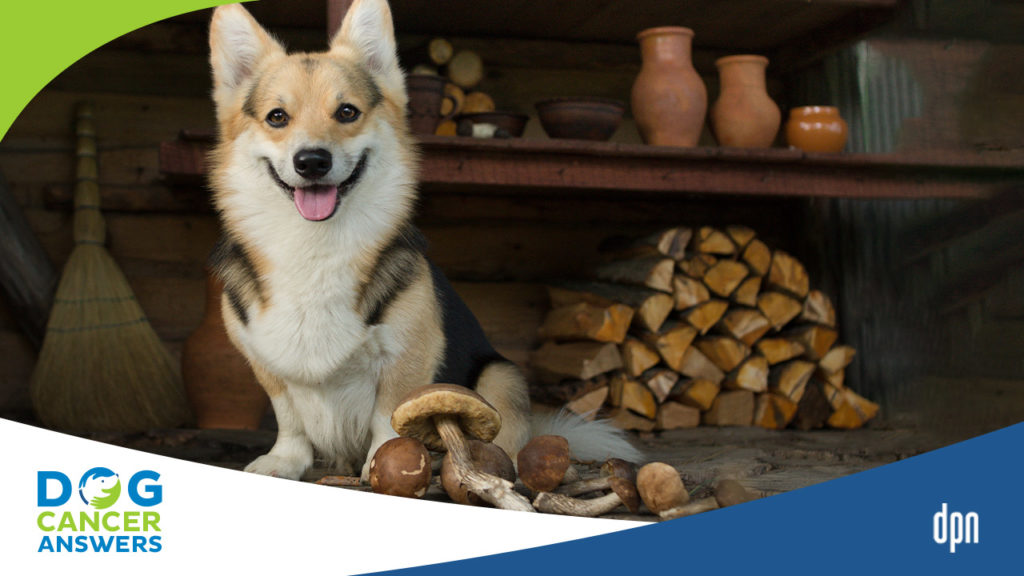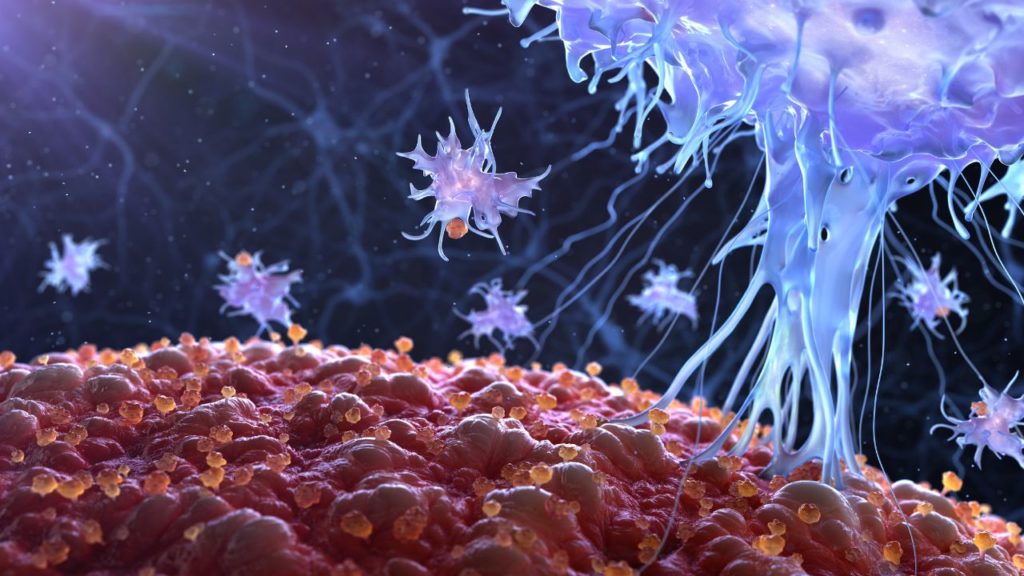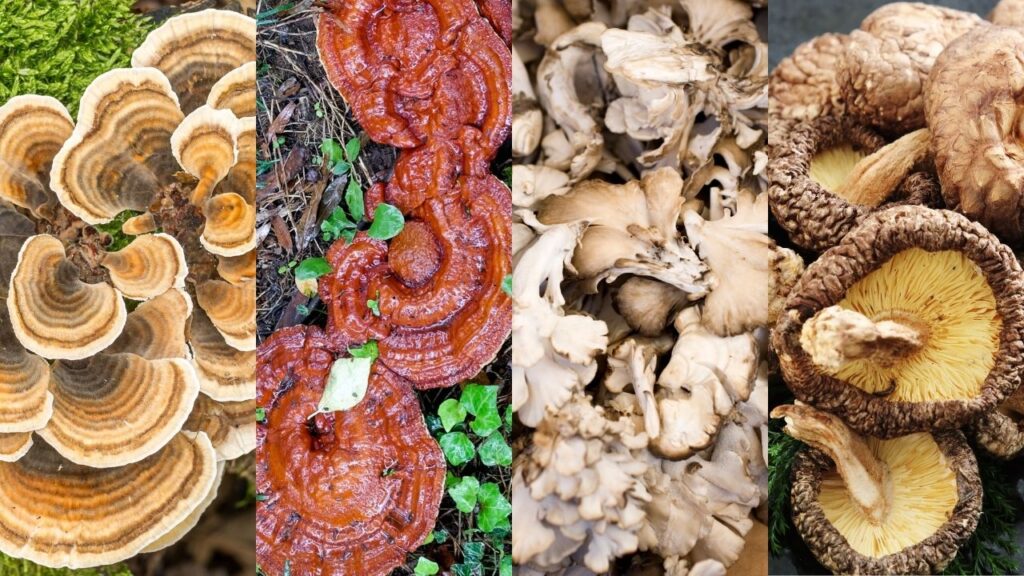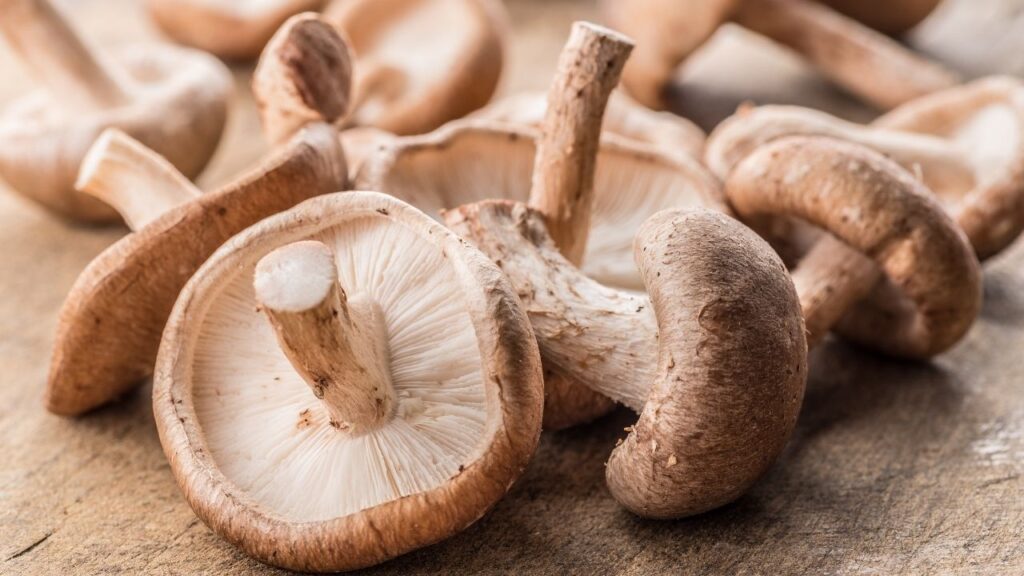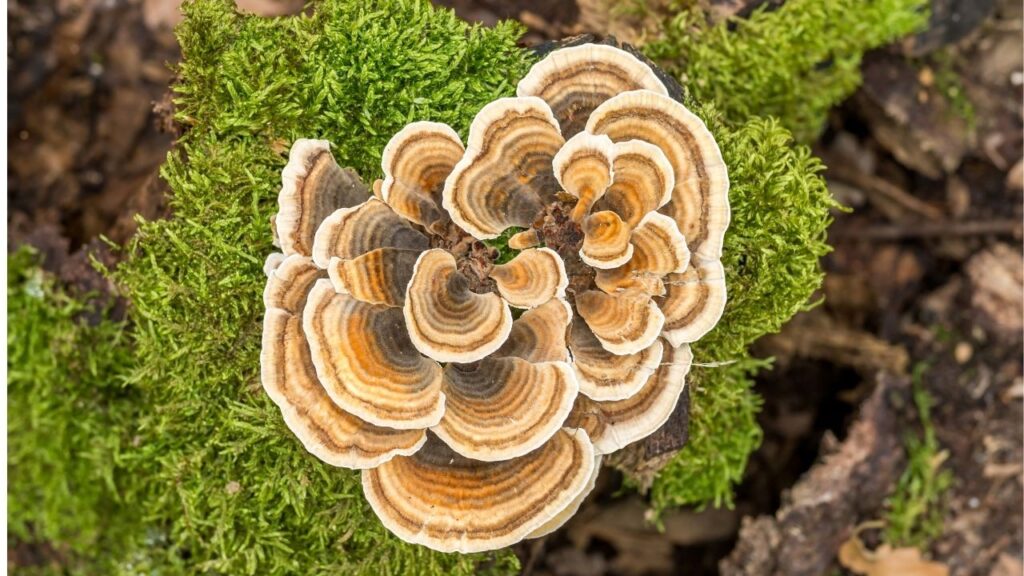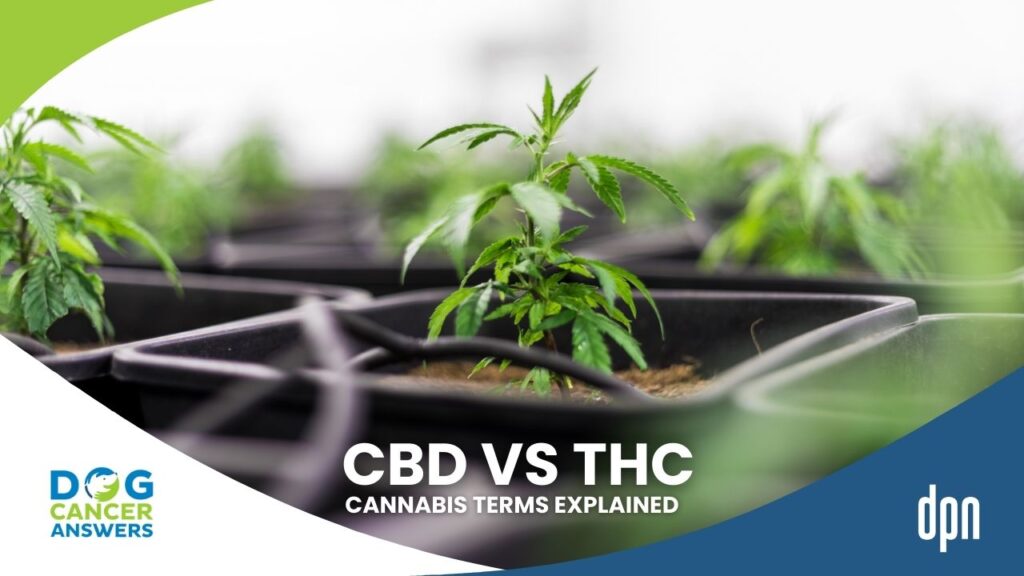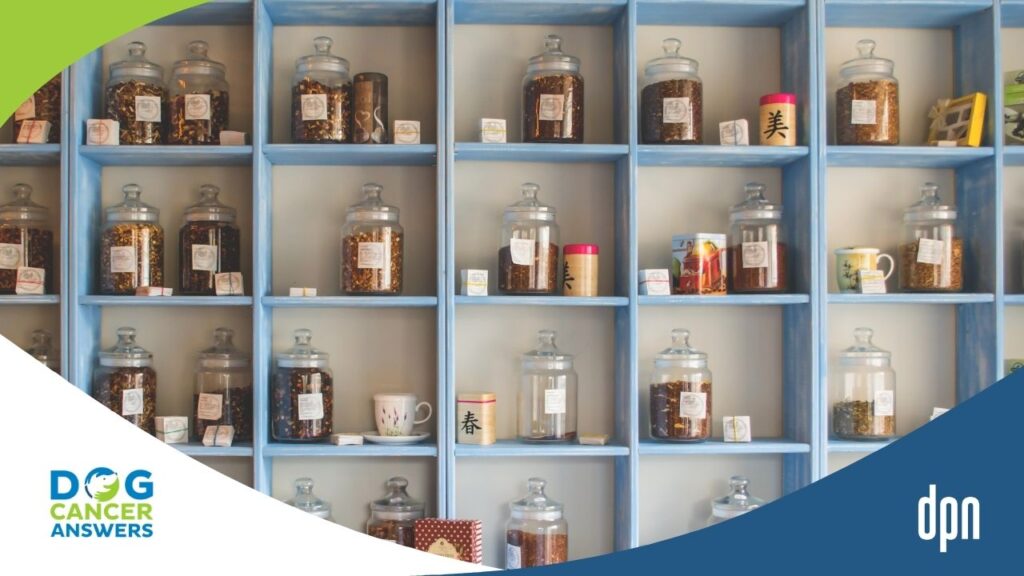EPISODE 188 | RELEASED October 17, 2022
Medicinal Mushrooms for Dog Cancer Part 1 | Dr. Robert Silver
When it comes to dog cancer, beta glucans put the magic in mushrooms. Learn how mushrooms are harvested for supplements and how they can help your dog.
SHOW NOTES
Dr. Robert Silver is a longtime veterinarian with a passion for integrative therapies that can work alongside traditional treatments. One of his special interests? Medicinal or functional mushrooms.
In this episode, Dr. Silver breaks down what makes certain mushrooms beneficial for dogs with cancer (hint: beta glucans are just the tip of the iceberg), how mushrooms are grown and harvested to make a quality supplement, and what veterinarians need to know about medicinal mushrooms.
Be sure to listen to Part 2 of this series, where we will dive into specific mushrooms and their unique properties.
Links Mentioned in Today’s Show:
American College of Veterinary Botanical Medicine
The Medicinal Magic of Functional Mushrooms continuing education webinar for veterinarians and vet techs
[00:00:00] >> Dr. Robert Silver: But the longer that you do it, the better it works. It does something that we call training the immune system. Just like you train your muscles, it kind of, you know, the immune system gets trained by it each time, which makes the immune system better able to deal with the challenges when they happen.
[00:00:18] >> Announcer: Welcome to Dog Cancer Answers, where we help you help your dog with cancer.
[00:00:25] >> Molly Jacobson: Hello friend and welcome to Dog Cancer Answers. This episode is Part One of a two part series on medicinal mushrooms for dog cancer. This week we’re going to talk about the properties of medicinal mushrooms in general, and then next time we’ll dive into specific mushrooms and their specific benefits.
Our guest is Dr. Robert Silver, who has been a veterinarian for 40 years and is extremely interested in integrative medicine and how these therapies can benefit our dogs. Dr. Silver is the president elect of the American College of Veterinary Botanical Medicine and is also the Chief Veterinary Officer for the company Real Mushrooms. Thank you so much for joining us.
So, Dr. Silver, I have been interested in mushrooms for a long time. I’ve watched many documentaries, especially in the last couple months, um, Michael Pollen’s book, which I read, has been made into a documentary series on Netflix, and there’s also this, hmm.
[00:01:28] >> Dr. Robert Silver: Fantastic Fungi.
[00:01:29] >> Molly Jacobson: That’s the one. Fantastic Fungi. So here’s my first question for you. Are there any mushrooms that are not medicinal?
[00:01:39] >> Dr. Robert Silver: Yes, there’s, there’s quite a few mushrooms in existence on our planet and the fungal kingdom, you know, is equivalent to the kingdom of plants or the kingdom of animals. So it’s a huge representation on our planet of that huge kingdom. I think maybe 10% statistically are the mushroom version of the fungus.
And we can have, uh, fungi, mushrooms, that are edible and tasty, you know, like shiitake. We can have mushrooms that are, you know, pretty fantastical, like psilocybin, let’s say. And um, we’ve got have mushrooms that are so toxic that a quarter teaspoon can liquefy your liver. And all the rest are medicinal.
Now, some of the medicinal mushrooms are also our prized edible mushrooms. If you enjoy shiitake mushroom, which is one of my favorites, you know, or even little button mushrooms, there’s been a copious amount of research into their ingredients and their, their constituents and their influence on cultures that eat them.
And there’s quite a few prospective as well as retrospective studies that are teasing out what these individual components of the mushrooms do in terms of how they benefit our immune systems, how they help us manage diseases. So, long-winded answer, but there are quite a few medicinal mushrooms. We’re looking at maybe 10 to 15 of significance.
And it gets very confusing as far as, well, what should I use? What’s for this? What’s for that? You know? And so that’s been part of my job. I, I joined Real Mushrooms a year ago to kind of head their vet pet section so that I can develop educational materials and informational materials and processes and procedures that vets can use, and then can also be shared with pet parents that would allow them to use these more effectively than they might if they didn’t have that information.
[00:03:35] >> Molly Jacobson: It sounded to me like what you said at the very beginning was that mushrooms can boost immunity. When you boost immunity in a dog with cancer whose immune system is obviously already compromised, or else they wouldn’t have cancer, then you are assisting the body in fighting the cancer directly.
Whatever other outside – like if you’re cutting it out with surgery, if you’re using chemo, if you’re using radiation or other things that directly kill cancer cells, you’re also, with mushrooms, taking that immune system that’s maybe gone offline, boosting it, getting it back so that it can fight on its own and help the dog. Is that correct?
[00:04:18] >> Dr. Robert Silver: And help prevent recurrence.
[00:04:19] >> Molly Jacobson: And help prevent recurrence, of course.
[00:04:21] >> Dr. Robert Silver: If in fact they wind up becoming cancer free – we know that cancer free may be an oxymoron. You know, cancer’s not free and, and even when we think it’s gone, sometimes we see it coming back years later.
[00:04:34] >> Molly Jacobson: Right.
[00:04:35] >> Dr. Robert Silver: You know, so it’s good to, to also have, I think, a post-treatment strategy to help keep that immune system strong and vigilant against whatever might be happening there, since obviously that patient had that tendency before, you know.
[00:04:49] >> Molly Jacobson: Sure. So let’s start at the beginning. Tell me a bit about mushrooms and the different stages of mushrooms, because I know that can be important to understand when choosing an actual mushroom supplement for your dog.
[00:05:02] >> Dr. Robert Silver: Mushrooms have a life cycle, and it starts with a spore. And the spores have to mate with a like spore in order for them to, just two gametes joining, like male and female, only they’re not really male and female, but they’re, you know, polarities. And then the, these spores mate, and then they form what’s called a hyphae tube. And then the hyphae tubes keep growing and proliferating and become a tangled mass of hyphae tubes, tubes called the mycelium.
And then the mycelium is the vegetative part of this mushroom cycle, which digests and eats whatever it is on and gets that nourishment from that so it can grow, but in the process it also completely can degrade the material that it’s digesting. So that’s where we see mushrooms contribute huge to the ecology of our planet because they’re the garbage collectors, they’re the waste removers.
They digest and remove and make the stuff that is dead and dying into nutrients that can then supply the living. It’s a really beautiful role that they play on our planet.
[00:06:08] >> Molly Jacobson: They literally decompose like, say if a log in the forest, a tree falls and dies, that’s now food for the mushrooms.
[00:06:15] >> Dr. Robert Silver: Yeah, and it decomposes it. And then what it decompose it into is food for everything else in the forest.
[00:06:22] >> Molly Jacobson: It composts it.
[00:06:23] >> Dr. Robert Silver: It’s wonderful. And these mycelial beds that underlie the forest floor, they’ve measured them to be square miles in size. They’re huge. And apparently it’s like the worldwide web. It’s a communication system that the mycelium can not just share food and nutrients, but apparently there is some subtle exchange of information through chemical messengers. We’re not quite sure yet, we’re just starting to get into that, but it’s a fantastic concept, you know, it really is.
So once the mycelium reaches a point, and environmental conditions reach a point – maybe they run out of materials to eat, maybe the temperature changes, the moisture changes – they then send up these spore-bearing structures, which are mushrooms.
[00:07:11] >> Molly Jacobson: Okay.
[00:07:12] >> Dr. Robert Silver: And the mushrooms then create the spores, which drops them, they get dispersed by the wind, or they get eaten by an animal and transit through the digestive system and leave in the poop, and the cycle begins again.
[00:07:25] >> Molly Jacobson: That sounds magical to me.
[00:07:27] >> Dr. Robert Silver: Biology is magic, if you think about it. That’s, you know, when I studied veterinary medicine, I was left with almost a religious feeling about how amazing life is, you know? But continue, I don’t mean to interrupt you.
[00:07:39] >> Molly Jacobson: No, that’s exactly the point I’m making. It feels like magic. This idea that there’s this bed of mycelium, it’s creating new life and it’s creating food for the life around it. What does that do when it’s in the body? What happens to us, to our dogs, when we take those substances in to our bodies? Like, does the magic continue?
[00:08:03] >> Dr. Robert Silver: Well, there are those that would say the magic does continue, and certainly if we have a "magic" mushroom, then certainly that magic does continue because of the presence of these molecules in there. Psilocybin – which is found in Psilocybe – which is a tryptamine type of molecule that winds up creating that psychedelic experience, and-
[00:08:26] >> Molly Jacobson: Okay.
[00:08:26] >> Dr. Robert Silver: -these days they’re actually decriminalizing it because they’re finding that it seems to have a benefit for humans with PTSD and severe depression and, and generalized anxiety and a number of things. And so I think that cannabis kind of opened the door to the possibility of these plant molecules, or fungal molecules, can actually benefit humankind under the appropriate, you know, guidelines.
[00:08:50] >> Molly Jacobson: Right.
[00:08:51] >> Dr. Robert Silver: So I think cannabis kind of paved the way, and so now we’re seeing a lot of interest in that aspect of the mushrooms. Now, right now, I’m not speaking to that. I have no experience, no knowledge of what psilocybin would do in a dog.
[00:09:06] >> Molly Jacobson: Right.
[00:09:07] >> Dr. Robert Silver: I’d like to find out, and I may actually give it to my own rescue dog who’s fairly PTSD, to have a little controlled experiment there, giving him a tiny little dosage of it, you know, and seeing how that works. But really what I’m talking about are the mushrooms that are used to improve one’s health.
[00:09:26] >> Molly Jacobson: Right.
[00:09:26] >> Dr. Robert Silver: Maybe to treat disease, but I think to be more appropriate with the FDA, they improve health so our bodies can then deal with that disease.
[00:09:34] >> Molly Jacobson: Sure.
[00:09:34] >> Dr. Robert Silver: And so traditionally over millennia, you know, the part of the mushroom that has been ingested has been that, we call it the fruiting body or the mushroom. It bears the spores. That’s what gets eaten.
[00:09:47] >> Molly Jacobson: Fascinating. So what is it inside mushrooms that makes them so special to help our dogs?
[00:09:53] >> Dr. Robert Silver: First of all, all mushrooms share beta-glucans because the beta-glucans are actually, for the mushrooms, they’re structural components of their cell walls.
[00:10:02] >> Molly Jacobson: Oh.
[00:10:02] >> Dr. Robert Silver: So all mushrooms have beta-glucans to some extent or another, which means all mushrooms have that immune modulating benefit that beta-glucans have. And beta-glucans are pretty interesting because they are, being structural components of the of the fungal cell wall, they are the earliest attempt at our immune systems to protect us against nasty early fungal infections. Because if you can identify that it’s a fungus by identifying the beta-glucan in the cell wall, you then can get the immune system to activate before the fungal infection takes over.
The beta-glucan’s really not like a pharmaceutical. It goes inside the macrophage. It gets, you know, phagocytized by the macrophage, and then it gets processed, and then the macrophage travels somewhere and then spits out a more activated version of the beta-glucan to an area where it needs. I mean, that’s, that’s kinda simplifying the science behind it, but that’s what’s amazing about beta-glucans. And the amount of research that’s published about beta-glucans, whether it’s sourced from yeast or, or mushrooms, or seaweed, or even grain, is huge.
Beta-glucans from grain, that’s why we eat oat bran because it lowers cholesterol. So we know that mushrooms also have that property of lowering cholesterol, not just because of the beta-glucans, but because they also can contain molecules that are statin like. That’s where we discovered statins was in mushrooms. You know, that’s where penicillin and streptomycin came from, fungi. I mean, the fungal kingdom has really contributed hugely to our medicinal armamentarium. So, all mushrooms have the beta-glucans. In addition to the beta-glucans that mushrooms contain, they contain these terpenes, and they contain other molecules as well. And to the terpenes, all of which have some immune benefit or medical benefit to the body.
So, individual mushrooms have these individual terpenes and molecules that give them their individual properties.
[00:12:03] >> Molly Jacobson: And what are terpenes?
[00:12:04] >> Dr. Robert Silver: Terpenes are what gives fruits and vegetables their aroma. If you squeeze a lemon, you can smell that lemon smell, you’re smelling it because those are the terpenes that are hitting your olfactory receptors.
[00:12:15] >> Molly Jacobson: How do you spell terpenes?
[00:12:17] >> Dr. Robert Silver: T E R P E N E S.
[00:12:20] >> Molly Jacobson: Okay.
[00:12:20] >> Dr. Robert Silver: Terpenes.
[00:12:21] >> Molly Jacobson: Terpenes.
[00:12:21] >> Dr. Robert Silver: And they’re all polymers of, um, an isoprene molecule, which is a type of hydrocarbon. And even vitamin A is a terpene. Rubber’s a terpene. The terpenes in mushrooms tend to be large sized molecules, and they also have kind of a bitter taste, but they’re very active.
They’re active in terms of helping to calm the mind, they’re active in terms of being cytotoxic for cancer cells, and they’re active in terms of their influence on immunocytes in terms of their ability to elaborate less inflammatory cytokines, and, you know. So it’s, it’s a remarkable polypharmacy that each and every individual mushroom species contains.
[00:13:02] >> Molly Jacobson: Okay. So mushrooms contain a lot of different compounds that can be beneficial for dogs with cancer and beta-glucans and terpenes are two of the most important compounds. So do all mushrooms have those? Can I just go out into the woods and pick a mushroom?
[00:13:22] >> Dr. Robert Silver: We do not recommend eating mushrooms raw. Mushrooms are very fibrous, very tough to eat, and the medicinal properties are contained really within that fiber. So they need to be cooked in order to release that fiber. And some mushrooms have some very mild toxic principles, some of which are anti-nutritional, for instance in the same way that beans can have an anti-trypsin type of an agent, so can mushrooms.
And so they need to be cooked. They need to cooked to release the goodies. One of the best ways to cook a mushroom for getting the medicinal properties is a stew or soup. Let it just boil, you know, boil for a while to get those things out. A lot of the good components of a mushroom are very heat tolerant, you know, they’ve got some that are more heat sensitive, kinda the same way as we see with cannabis.
[00:14:09] >> Molly Jacobson: Are those good things, are those in the broth or are those in the mushroom itself, once you’ve cooked it?
[00:14:15] >> Dr. Robert Silver: I guess that would depend on how well you cook it and whether you cut the mushroom up small enough so that the water could permeate all the solid parts. For myself, I would take both the broth and the solid mushroom. And also, it’s not just a matter of the goodies, the the, the fiber of the mushroom actually benefits the microbiome.
[00:14:36] >> Molly Jacobson: Ah.
[00:14:36] >> Dr. Robert Silver: So when you include the immune enhancing benefits of mushrooms because they in, that is part of their fiber, and the microbiome enhancing benefits of the fiber, you know, why just drink the broth or drink the mushroom, solid mushroom parts? Take the whole thing.
So if you really wanna get, you know, good health benefits for mushrooms, I really think it’s better to take those mushrooms that have been processed into more of a medicine format, because you’ll also get more of a standardized dosage, you know, from one scoop of powder or one capsule, than um, you might from a mushroom that’s been cultivated that you don’t know what its initial potency is. Because one may have come from this farm, one may have come from that farm.
[00:15:18] >> Molly Jacobson: Right. That’s something that I think a lot of people think, Oh, I can just do it myself. And you can, however you don’t know what it is that you’re actually getting because you have not looked at all of those things under the microscopes and standardized everything. The nice thing about a supplement form is that somebody has gone to the trouble to make sure that there’s, what’s on the label is what’s inside the product.
[00:15:43] >> Dr. Robert Silver: Well, and hopefully there’s good quality control for that product.
[00:15:47] >> Molly Jacobson: Right.
[00:15:47] >> Dr. Robert Silver: That’s still an issue with the supplement industry, but not as much as it used to be.
[00:15:50] >> Molly Jacobson: Right. So how do supplement companies go about harvesting or growing their own mushrooms? Do they have like a giant dark building or a dark cave?
[00:15:59] >> Dr. Robert Silver: Well, mushrooms do grow in the dark, don’t they? And in fact, I, I worked with a consultant once, um, when I was with Nature’s Variety, and she said, Yeah, we’re consultants, you know, they like to keep us in the dark and feed us poop. But you know, light is part of the, of the cycle of the mushrooms. So Real Mushrooms’ parent company cultivates these mushrooms outdoors in shade houses, which is probably their best location. Many of the medicinal mushrooms grow on dead and dying wood.
Turkey Tail does. Reishi does. Lion’s Mane does. You know, then we’ve got some others that grow like on leaf litter and some that actually grow in caterpillars. Cordyceps is one of those. Very unusual substrates that they grow on. So it takes a long time. It takes maybe six months to grow these mushrooms on these wood logs to bring them to maturity. So it takes a while.
And so, once they’re harvested, they then take those mushrooms and they dry them, then they grind them up into small amounts and then they put them into a controlled hot water bath at a specific temperature for a specific period of time in order to extract the beta-glucans, which are the primary immune modulating property, principle, in the, in the mushrooms.
[00:17:14] >> Molly Jacobson: Okay, got it. Now, I’ve also seen mentions of grain in supplement products and then other people saying you should avoid products with grain – explain a little bit about that.
[00:17:26] >> Dr. Robert Silver: Grain is really used commonly to germinate the spores. And then the spores – ’cause you’ve seen like, what mold looks like on bread, it grows really well on grain. So, they use grain to grow the spores into the mycelium, that’s part of the cultivation of a mushroom.
Once they have the, the spores, and the the grain, it all covered with the white mycelium, they then take that – they call it spawn – and then they might put it inside a log or put it into some leaf litter, put it into whatever the final place is going be, and then it grows into the mushroom from there.
There’s some companies though, and most of them are, are companies in the US because it’s so labor intensive to cultivate mushrooms that way – six months to grow it – they go to the point where they make the spawn, where they grow the mycelium in the grain, but then they dry the mycelium and the grain as a powder, and they sell that as mushroom extract.
[00:18:22] >> Molly Jacobson: So it’s not actually the mushroom, it’s the precursor to the mushroom. It’s the mycelium, which gives rise to mushrooms, but it’s not the mushroom itself. And then it’s mixed in the rice flour that it was used to grow the mycelium?
[00:18:37] >> Dr. Robert Silver: Yeah, or whatever grain they’re using.
[00:18:38] >> Molly Jacobson: Uhhuh.
[00:18:39] >> Dr. Robert Silver: So they commonly, they’ll use rye grains to grow them on.
[00:18:42] >> Molly Jacobson: Okay.
[00:18:43] >> Dr. Robert Silver: So this way some companies will sell this mycelium powder, which is 50% grain carbohydrate, to the consumer who thinks they’re getting a fully potent Turkey Tail. When in fact, you know, over the centuries, it’s always the mushroom, it’s not the mycelium. Now, the pharmaceutical industry now is, has found that if you grow the mycelium in a liquid culture, you can actually amplify some of the good things that the mycelium’s creating and turn it into like a way to create a pharmaceutical drug.
And that’s what the Turkey Tail drug is, the Turkey Tail extract that that has those two studies now published that we can discuss shortly. Mycelium can be very potent.
[00:19:26] >> Molly Jacobson: Okay.
[00:19:26] >> Dr. Robert Silver: And the pharmaceutical industry is doing a lot of that with different mushroom species, using their mycelium to extract molecules and then doing drug discovery on that. I mean, it’s remarkable. So the problem with the mycelium on the grain is not that it’s the mycelium, which may not be as potent as the mushroom, but does have some medicinal value, but it’s that you can’t separate it from the grain carbohydrates.
[00:19:51] >> Molly Jacobson: Ah.
[00:19:51] >> Dr. Robert Silver: And a lot of people don’t wanna feed their dogs grain, they’re on the grain free diets. A lot of people that, with pets that have cancer, they’re trying to downsize that carbohydrate fraction, you know, of their nutrient profile because we know carbohydrates, and to some degree, protein, can feed the cancer cell. So to me, it’s just not productive to use that particular type of mushroom extract for cancer, and I would suggest that your viewers, you know, make sure that when they are selecting a product, a mushroom product, for their pets, that they talk to the company and find out how is it cultivated? Are there fillers in it or is there grain in it, you know. And Real Mushrooms does not have that, we can certainly guarantee that and we can give you as- third party assays and everything to prove it.
But you know, that’s what I would recommend, you know, for your consumer to make sure they’re getting what is going be really effective for that pet with cancer.
[00:20:46] >> Molly Jacobson: And that’s because the mycelium doesn’t necessarily have as much of the beta-glucans or the terpenes that the mushrooms that grow out of the mycelium later have.
[00:20:57] >> Dr. Robert Silver: This is true. There was a study done in which they compared and actually measured the beta-glucan content in mushrooms grown on grain and mycelium grown on grain as compared to the mushroom fruiting bodies – we call it fruiting cause it fruits with the spores, you know. So, and, and the difference is like maybe five times higher levels in the mushroom as compared to the mycelium. Now you can take a lot more mycelium maybe and still get that, and I’m not trying to detract from the value of the mycelium. I think it’s amazing stuff, what it does and how it’s digesting and everything, and the communication skills that we talked about with that. But nonetheless, it’s too interfaced with that grain to be helpful for this particular subset of disease, cancer, you know?
[00:21:43] >> Molly Jacobson: Right.
[00:21:43] >> Dr. Robert Silver: Maybe for some other type of disease it might be ok.
[00:21:46] >> Molly Jacobson: This is all so fascinating. I wanna take a short break, but when we come back, let’s dive a little deeper into how beta-glucans boost the immune system.
We are back with Dr. Rob Silver talking about medicinal mushrooms for dog cancer. So earlier you mentioned how beta-glucans from mushrooms interact with macrophages. And macrophages are white blood cells that move around and kind of eat foreign invaders. Macrophage, macro like big, phage like eating, so big eaters.
So these big eaters move around and eat up the foreign invaders. So my understanding is that these macrophage immune cells basically eat the beta-glucans and then spit them out. So can you explain about that a little bit more?
[00:22:41] >> Dr. Robert Silver: Basically, the immune cell gets activated by the beta-glucan and then shares that activation with other immune cells at the site that it’s needed, at the local site.
[00:22:53] >> Molly Jacobson: I see.
[00:22:54] >> Dr. Robert Silver: ‘Cause immune cells get attracted to a place where they need to work by chemicals that are being set off by that inflammatory chemicals or you know, blood byproducts or whatever it is that they’re dealing with in terms of that problem.
[00:23:08] >> Molly Jacobson: So the beta-glucans kind of acts like a key starting a car, getting the macrophage to turn on and actively search for threats in the area like cancer?
[00:23:18] >> Dr. Robert Silver: Really, you can’t go wrong, really, with a mushroom. But, you know, but part of that is, is also to realize, by explaining how that works, is that it’s not gonna happen overnight.
[00:23:29] >> Molly Jacobson: Right. How long does this take?
[00:23:31] >> Dr. Robert Silver: Well, I, I call them lifestyle supplements.
[00:23:34] >> Molly Jacobson: Okay.
[00:23:35] >> Dr. Robert Silver: I think they’re something that should become part of a lifestyle, that you don’t use them like a drug.
[00:23:39] >> Molly Jacobson: Ok.
[00:23:40] >> Dr. Robert Silver: But you use them like a, some sort of a wellness promoter, a health promoter, you know, versus a disease treater, you know, although they certainly can address diseases. So yes, I would say if you’re looking for a response, from what I’ve heard anecdotally, and not with, necessarily, you know, "your cancer was cured in two weeks."
But you know, if you’re looking at things like maybe relaxing them, you know, or we’ve got some antihistamine things we’re dealing with, I’ve seen response within two weeks-
[00:24:08] >> Molly Jacobson: Ok.
[00:24:08] >> Dr. Robert Silver: -of giving it. So I would say two to three weeks is a reasonable period of time to get short term response from it. But the longer that you do it, the better it works. It does something that we call training the immune system. Just like you train your muscles, it kinda, you know, the immune system gets trained by it each time, which makes the immune system better able to deal with the challenges when they have them.
[00:24:31] >> Molly Jacobson: So two to three weeks for short term response, and those responses can be – you mentioned calmness, what else?
[00:24:39] >> Dr. Robert Silver: Maybe some antihistaminic effect, maybe some benefit to the digestion, um, maybe some mental clarity, you know, those sorts of things. But in terms of the impact of the immune system on the cancer, that’s a longer term event.
[00:24:55] >> Molly Jacobson: Okay.
[00:24:56] >> Dr. Robert Silver: My experience treating pets with cancer, especially aggressive cancers, with natural substances, is sometimes that cancer’s so aggressive they’re gonna die before that natural substance kicks in to have any kind of benefit.
[00:25:10] >> Molly Jacobson: Right.
[00:25:11] >> Dr. Robert Silver: So I’m not against chemo at all. I think chemo can be a way to help keep the animal alive long enough so we can apply some of these other therapies as well. ‘Cause it’s, you know, getting them to survive is the name of the game. But with some aggressive cancers, you may have no options.
[00:25:28] >> Molly Jacobson: And lymphoma certainly is an aggressive cancer that, without chemo, you are looking at two to four weeks in general.
[00:25:37] >> Dr. Robert Silver: Oh my gosh, it can be very aggressive. Yeah.
[00:25:41] >> Molly Jacobson: So what are the most common side effects that you could see if you give your dogs mushrooms?
[00:25:46] >> Dr. Robert Silver: Some animals will have reactions to mushrooms. Large doses of Turkey Tail, according to a naturopathic practitioner who uses it for his patients for cancer in very high dosages, in some people it causes diarrhea.
[00:25:59] >> Molly Jacobson: But I assume that resolves over time.
[00:26:01] >> Dr. Robert Silver: Yeah, probably starting slow you wouldn’t get the diarrhea because the body would be more adaptive to it.
[00:26:07] >> Molly Jacobson: Are there any other possible side effects that people should look for and attribute to mushrooms?
[00:26:13] >> Dr. Robert Silver: I’ve not been able to find any kind of drug interactions or, or any real contraindications.
[00:26:18] >> Molly Jacobson: Wonderful.
[00:26:19] >> Dr. Robert Silver: Other than the possibility of an individual idiosyncratic reaction to it.
[00:26:23] >> Molly Jacobson: Right. So generally very safe, starting low and slow is always a good idea when you’re starting something new.
[00:26:30] >> Dr. Robert Silver: Absolutely.
[00:26:30] >> Molly Jacobson: And what do you think the most important thing for vets to know is about all of these medicinal mushrooms that you’re investigating and working with?
[00:26:40] >> Dr. Robert Silver: Well, I’m about to start my educational work with the veterinarians. I’ve engaged Dvm360 to do an online webinar-
[00:26:49] >> Molly Jacobson: Okay.
[00:26:49] >> Dr. Robert Silver: -which will be good, and I’m hopeful that we’ll get good response so that we can then do a few more, ’cause there’s so much information to impart. Real Mushrooms is supporting that. They’re very good about supporting education, also about supporting research.
They’re going to fund me to do some studies to show that these medicinal mushrooms, like let’s say Turkey Tail, which is probably one of the most popular ones for pet cancer, is safe when given at substantially higher dosages. Because when you ask a veterinarian what do they think of mushrooms, probably the first thing they’re gonna say is "poisonous."
[00:27:23] >> Molly Jacobson: Right.
[00:27:24] >> Dr. Robert Silver: You know, I went to listen to a noted, um, veterinary clinical pharmacologist speak and, you know, no sooner did she say the word mushrooms and, you know, two or three words later came the word poisonous. So, I mean, and as veterinarians, that’s our direct experience with mushrooms, is those pets that go into the backyard and eat something they shouldn’t that’s a mushroom, and come inside and vomit all over our beautiful white carpets and maybe get quite sick in the process.
Some of them could be fatal actually. So as vets, that’s what we know about. And, but there’s the world of fungi, the fantastic world of fungi is so much bigger than that, you know, we just need to know which ones are. So by working with a company that cultures it, that actually grows the stuff, you know, from scratch, you have a much better chance of getting this, the real deal in products because they’re starting with the spores that are already identified to be, you know, the genetics for that mushroom strain.
[00:28:23] >> Molly Jacobson: That makes a lot of sense. I appreciate your time. Thank you so much.
[00:28:28] >> Dr. Robert Silver: This was fun.
[00:28:30] >> Molly Jacobson: And thank you listener. Today we learned a lot of general information about medicinal or functional mushrooms. We learned about the different stages of their life cycle, how they’re harvested and turned into standardized supplements.
We also learned that the beta-glucans are the most important active part of mushrooms for boosting the immune system. In our next episode, we will have Dr. Silver back to talk about specific mushrooms and the role they play for our dog’s health, plus the current standard for dosing mushrooms for dogs. Visit our website at DogCancerAnswers.com to check out the useful links provided by Dr. Silver.
Also be sure to subscribe so you don’t miss next week’s part two on mushrooms. You can do that in any podcast app. Another great way to stay in touch is to subscribe to our newsletter, Dog Cancer News. You can sign up for that at DogCancerNews.com.
I’m Molly Jacobson, and from all of us here at Dog Podcast Network, I’d like to wish you and your dog a very warm, Aloha.
[00:29:35] >> Announcer: Thank you for listening to Dog Cancer Answers. If you’d like to connect, please visit our website at DogCancerAnswers.com or call our Listener Line at (808) 868-3200. And here’s a friendly reminder that you probably already know: this podcast is provided for informational and educational purposes only.
It’s not meant to take the place of the advice you receive from your dog’s veterinarian. Only veterinarians who examine your dog can give you veterinary advice or diagnose your dog’s medical condition. Your reliance on the information you hear on this podcast is solely at your own risk. If your dog has a specific health problem, contact your veterinarian.
Also, please keep in mind that veterinary information can change rapidly, therefore, some information may be out of date. Dog Cancer Answers is a presentation of Maui Media in Association with Dog Podcast Network.
Hosted By
SUBSCRIBE ON YOUR FAVORITE PLATFORM
Topics
Editor's Picks
CATEGORY


